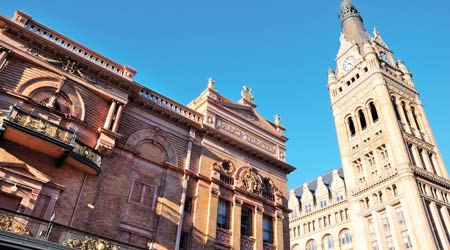How Façade Inspection Leads to Damage Repair
Case study: How a façade inspection on an apartment building led to cost savings because damage was identified and repaired before it got worse.
A few years ago, a façade inspection was performed on a 12-story apartment building that was built in 1983 and was clad with an exterior insulating and finishing system (EIFS) building façade. The early EIFS facades were barrier-type systems, meaning they assumed that all water would be kept from penetrating the building façade. Experience, combined with widespread industry literature, suggests that every building façade leaks to some degree, so providing drainage behind the outer façade layer is always best. Regardless, the barrier-type EIFS at this building had large, open cracks at re-entrant corners and at window and door openings. Additionally, sections of the EIFS façade were delaminated at the mechanical closets and in isolated areas at the concrete-masonry-unit-clad end walls of the apartment building.
The façade inspection identified these damaged areas and provided a rough estimate for the repair costs. The repair work included the use of a swingstage to perform isolated demolition to determine the exact wall assembly in conjunction with an infrared thermal imaging camera to identify areas where water was trapped behind the EIFS façade. The thermal imaging indicated areas of potential damage and trapped moisture. These areas were included in repair drawings for the repair contractor to sound (test the assembly by tapping and listening for differences in the sounds) for delaminated EIFS. In the end, all of the mechanical closets had the EIFS removed and replaced. Where the EIFS was not removed and replaced, the cracks that were initially identified, as well as those that were discovered during the performance of the repair work, were reinforced with plastic mesh, and the entire EIFS façade was coated with a finish coat of synthetic stucco.
Robert G. Mason is the practice leader, property condition assessments at Rimkus Building Consultants. He has completed more than 100 building façade inspections during his career. His specialty is building façade diagnosis and repair, particularly with brick, granite, and terra cotta masonry in historic structures.
Related Topics:










